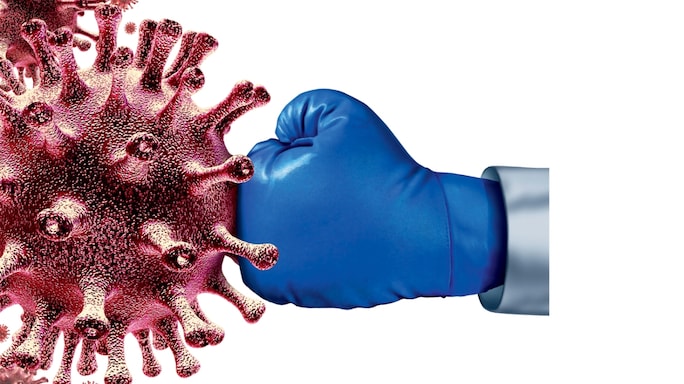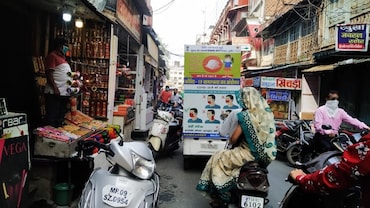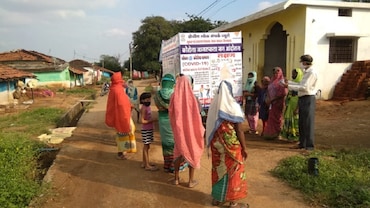- HOME
- /
- Coronavirus
- /
COVID 2.0: What You Need to Know
One year into the pandemic, we’ve learnt a lot about the coronavirus, but new questions have emerged. Here are answers to some of the more pressing ones

Sun Tzu, the military general from ancient China is credited with the quote “Know thy enemy and know yourself; ina hundred battles, you will never be defeated.” By now we have understood a lot about both the virus, SARS CoV-2, the disease, COVID-19, as well as who is most vulnerable, but in recent months, there have been a few developments. New strains of the virus have been reported and a new route of transmission has been confirmed.Many COVID-19 patients have suffered plummeting oxygen saturation levels. COVID-19 vaccines have been licensed and are being administered.
What do these developments mean for us? What steps should one take to protect oneself? Do we need additional measures? How effective are the vaccines? How long will I be protected once I get my jab? Understanding each of these can help us protect ourselves from the pandemic that has laid the world so low.
Has the virus changed?
Different parts of the world have reported a few new strains of SARS CoV-2. This is a natural phenomenon among viruses. Every time a virus multiplies, errors—called mutations—creep in during the replication process,which results in changes in its transmissibility (ability to pass to others),infectivity (ability to cause disease)and/or immune escape (ability to avoid detection by the human immunesystem). The more a virus circulates,the higher the probability of mutations.Once a virus with mutations begins to circulate and affect a population, it is termed a new strain or variant.
Globally, since the start of pandemic,nearly 200 new strains have been identified but only a select few—the UK(B.1.117), South Africa (B.1.351) and Brazil (P.1) strains—are cause for concern. In India, new strains called double mutant (mutations at two different places; scientifically named B.1.617)and triple mutant (three mutations in same strain; B.1.618) have been identified. Although these have been circulating in several Indian states, scientists and epidemiologists are still determining whether Indian strains lead to increased infectivity, transmissibility or immune escape.
At the individual level, measures to protect oneself from the new or old strain remain unchanged: face masks(consider double masking), physical distancing and regular hand sanitization are still the best ways to shield oneself from contracting this illness.Does it spread differently?In early 2020, COVID-19 was believed to spread through droplets from our mouth and nose, but in a few months,scientists discovered early evidence that the virus was airborne. While there was insufficient data at the time, a recent study in medical journal The Lancet published new evidence that, whereas droplets are still the main mode of transmission, COVID-19 does spread through the air as well.
Being airborne does not mean the virus circulates in the air and can enter through the windows of your house and infect a person. This new evidence suggests that breathing in the same air that a COVID-infected individual has exhaled into in the last 30 minutes can result in passing-on of infection.
This has implications on the use of shared spaces—a common bathroom shared with an infected individual,or stairs and elevators in multistorey buildings with limited ventilation may increase the risk of transmission.
This new understanding mandates increased cross-ventilation in shared spaces as well as correct mask use—with both nose and mouth covered—in any place outside your home, everytime. Consider anything outside the entrance of your house as a public space.It would be better to double-mask in crowded places or areas with higher risk of transmission such as a COVID testing centre, hospital or marketplace.
Do all COVID-19 patients need supplemental oxygen?
COVID-19 initially attacks the lungs but other organs are also affected. The core function of human lungs is to maintain blood oxygen saturation, which usually remains at 95 per cent or higher. However, as the disease progresses, lung function deteriorates and blood oxygen saturation starts to fall. Every COVID-19 patient is at risk of low oxygen saturation but the most vulnerable are people above 60 years and anyone of any age with comorbidities such as diabetes,hypertension, obesity or chronic lung,heart and kidney diseases.
Monitoring of one’s oxygen saturation with the help of a pulse oximeter is recommended for every person who has tested positive for COVID-19.Oxygen levels at 93 per cent or below,shortness of breath or sudden onset breathlessness should be seen as red flags. If this happens, consult your healthcare provider who will determine and advise hospitalization based on various criteria that categorizes the illness as mild, moderate or severe.
If one faces delays in receiving medical attention, supplemental oxygen can be administered at home, and lying in the ‘prone position’—face down with pillows below the neck, chest and legs—can improve oxygen saturation levels in the interim. Those with oxygen levels of 94 per cent or higher receive no added benefit from these methods.
Are COVID-19 vaccines effective?
Two vaccines, Covishield and Covaxin have already been in use in India since January 2021 while a third vaccine—Sputnik V—has become available here this month. The vaccines help to protect one from severe forms of the disease and reduce the risk of death. Covishield, a viral vector vaccine jointly developed by Oxford University and AstraZenaca is administered in two doses, and currently recommended at a gap of six to eight weeks. The efficacy of this vaccine—the reduction in risk of severe disease among those who have completed their vaccination compared to those who have not—has been reported to be 53 to 79 per cent, depending on the gap between doses. The longer the gap, the higher its efficacy.

Covaxin, an inactivated or killed viral vaccine, was jointly developed by Bharat Biotech and Indian Council of Medical Research, New Delhi. Its two doses are recommended at the gap off our to six weeks and it has an efficacy of 78 per cent. Both vaccines can cause minor adverse effects such as fever,injection-site pain, muscle pain and restlessness in some recipients.
While there have been some reports(mostly from European countries) of blood clots in people who have taken Covishield, these are being further investigated and evidence indicates that the benefits by far outweigh the risks. The third, Sputnik V—also a viral vaccine—was developed in Russia. Two shots of this are recommended at a gapof three weeks. This vaccine is reported to have 92 per cent efficacy with side effects similar to the others.All three vaccines have been given emergency-use license in India after being considered both safe and efficacious by regulatory authorities.
How long will the vaccines protect me?
An individual is considered fully protected two weeks after the second vaccine dose, which prevents severity of the diseases, reduces hospitalization and mortality for at least eight to 12 months. Thereafter, a booster may be needed. However, it is important to remember that a person can still get infected after being fully vaccinated and spread the infection to others. Therefore, even vaccinated individuals must continue to wear a mask and maintain other safety behaviours.
With the second wave of COVID-19 causing untold chaos around the country and the potential for additional waves before the pandemic ends, staying safe and protected through preventive measures, safety protocols and getting vaccinated, are our best hope of beating this pandemic for good.
Lead co-author of Till We Win: India’s Fight Against COVID-19 Pandemic,Chandrakant Lahariya is a medical doctor, epidemiologist and vaccines,public policy and health systems expert.






